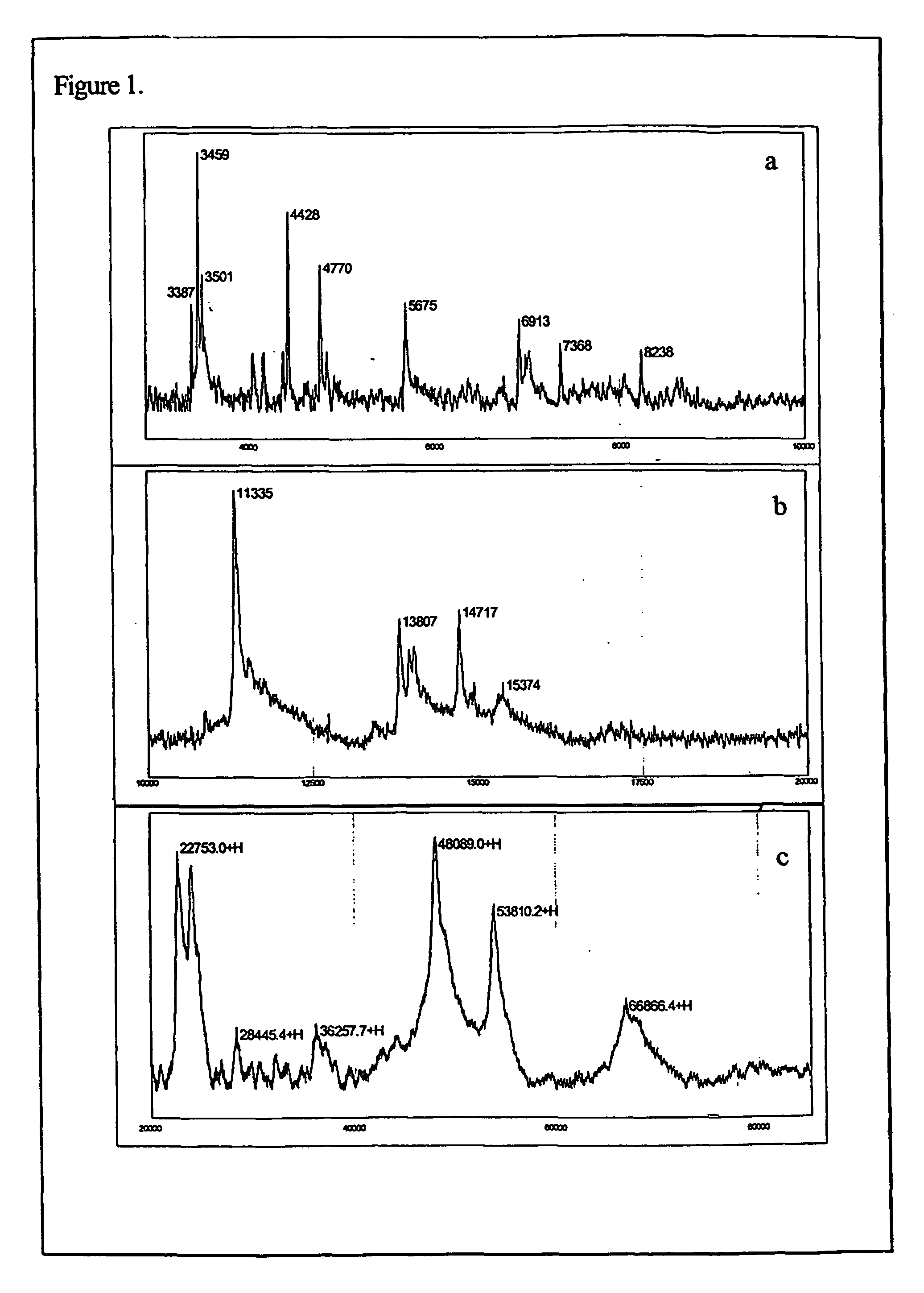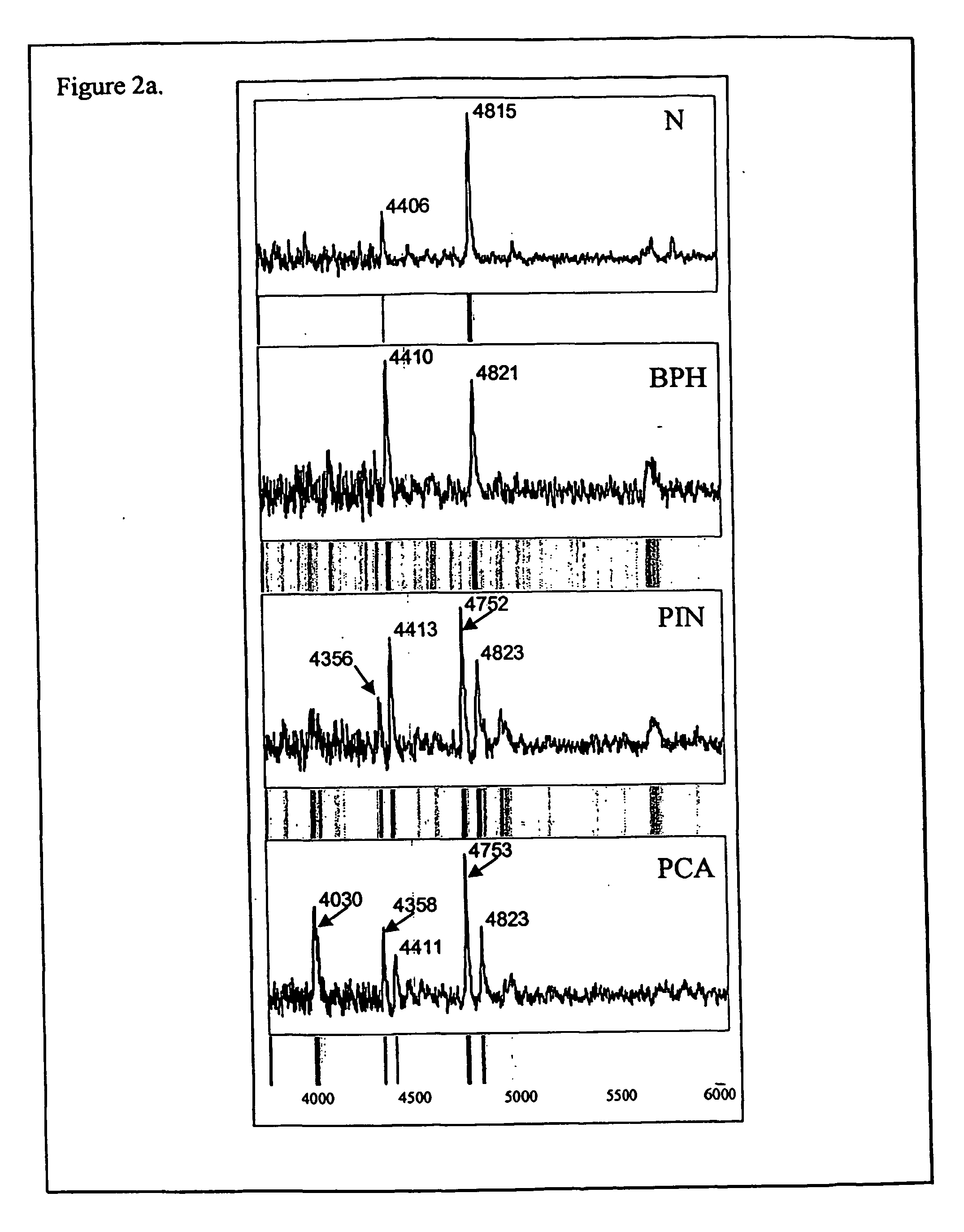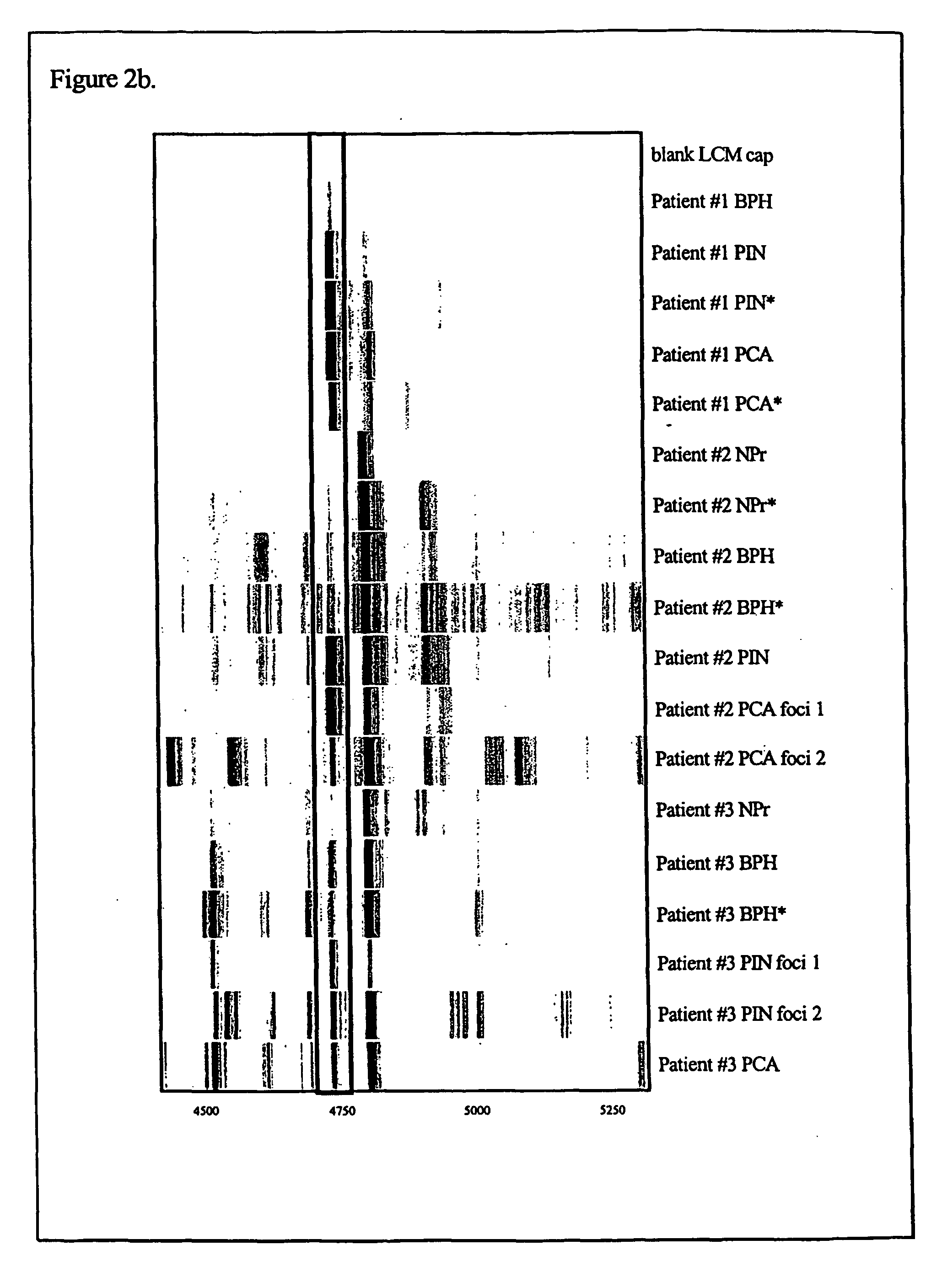Protein biomarkers that distinguish prostate cancer from non-malignant cells
a technology of protein biomarkers and prostate cancer, applied in the direction of biochemistry apparatus and processes, peptide sources, instruments, etc., can solve the problems of significant number of false positives and false negatives, present diagnostic tests are not completely satisfactory, and conventional psa tests may not be able to detect the presence of prostate cancer. to achieve the effect of reducing the potential for false positives
- Summary
- Abstract
- Description
- Claims
- Application Information
AI Technical Summary
Benefits of technology
Problems solved by technology
Method used
Image
Examples
examples
[0160] The following examples show the identification of markers that have positive or negative correlations with prostate cancer, prostate intraepithelial neoplasia, or benign prostate hyperplasia. Markers were determined from samples of cell lysates isolated by laser capture microdissection.
VI. Tissue Specimens
[0161] Prostate tissues were procured from consenting patients undergoing radical prostatectomy, following approved protocols. The tissues were processed immediately and stored in the Virginia Prostate Center's Bio-repository. Tissue pieces harvested for LCM were immediately embedded in OCT and stored at −80° C. One cryosection was stained with H&E and examined by a pathologist to identify cells of interest. Mirrored H&E stained sections, fixed in formalin and paraffin embedded, were also used to further aid in the identification of specific cell types. Additional serial frozen sections at 8 microns were used for microdissection.
VII. Laser Capture Microdissection
[0162]...
PUM
| Property | Measurement | Unit |
|---|---|---|
| average mass | aaaaa | aaaaa |
| thickness | aaaaa | aaaaa |
| pH | aaaaa | aaaaa |
Abstract
Description
Claims
Application Information
 Login to View More
Login to View More - R&D
- Intellectual Property
- Life Sciences
- Materials
- Tech Scout
- Unparalleled Data Quality
- Higher Quality Content
- 60% Fewer Hallucinations
Browse by: Latest US Patents, China's latest patents, Technical Efficacy Thesaurus, Application Domain, Technology Topic, Popular Technical Reports.
© 2025 PatSnap. All rights reserved.Legal|Privacy policy|Modern Slavery Act Transparency Statement|Sitemap|About US| Contact US: help@patsnap.com



